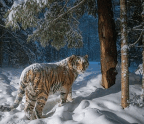Master macro
Aug 24, 2018
4 minutes



Your pro tutor
Ross Hoddinott
Ross Hoddinott is a multi-award-winning wildlife and landscape photographer, best-known for his close-up photography. He lives near Bude in North Cornwall. Check out his work at www.rosshoddinot.co.uk
It may be obvious, but insects are much easier to shoot when they are perfectly still – and this means shooting them at the right time of day. “I rely on natural refrigeration for most of my shots of butterflies and damselflies,” says Ross Hoddinott, “so I photograph them right at the end of the day or just after dawn, when it is cooler and they are resting.” Our plan, therefore, is to do two different shoots – one in the evening, and the next at
You’re reading a preview, subscribe to read more.
Start your free 30 days





